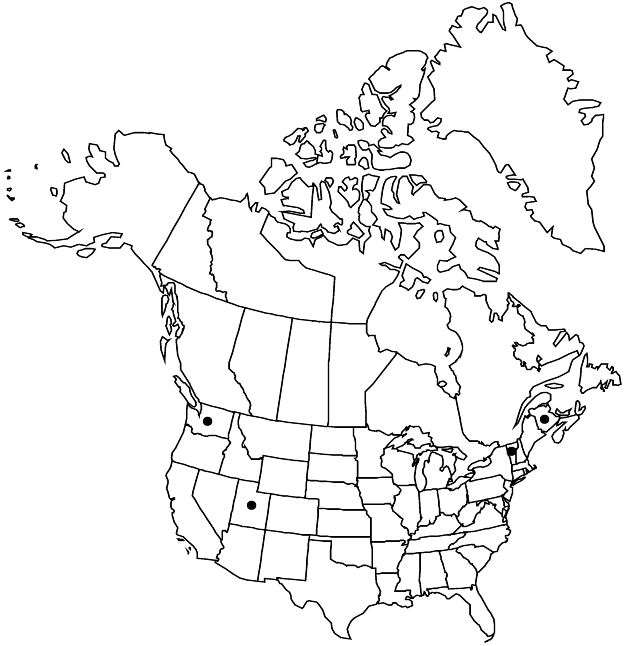Sorbus hybrida
Sp. Pl. ed. 2, 1: 684. 1762.
Trees, 30–120 dm. Stems single or multistemmed; bark gray; winter buds brownish to purple, ovoid to ovoid-conic, 4–10 mm, dull, not glutinous, densely white-villous, at least distally and on scale margins. Leaves proximally pinnately compound, lobed distally; stipules deciduous or persistent, often white-villous; blade paler green abaxially, dull green adaxially, ovate to oblong-ovate, rarely oblong, 7–13 × 5–11 cm, pinnately lobed with (1 or) 2 (or 3) pairs of sessile or decurrent, free, oblong leaflets, terminal leaflets 7–10-lobed, margins serrate at least distally, lobe and leaflet apex acute or obtuse, lateral-veins 7–10 pairs, abaxial surface whitish-tomentose. Panicles 25–75-flowered, flat-topped or rounded, 4.5–10 cm diam.; peduncles white-villous. Pedicels white-villous. Flowers 10–15 mm diam.; hypanthium tomentose, hypanthium plus sepals 5–7.5 mm; sepals 1.5–4 mm, margins usually entire, rarely with inconspicuous glands; petals white, suborbiculate, broadly obovate, broadly ovate, or broadly elliptic, 5–7 mm; stamens 20; carpels 1/2 adnate to hypanthium, apex conic, styles 2 or 3, 2–3 mm. Infructescences glabrate to villous. Pomes red, globose to subglobose, 8–15 mm diam., shiny, not glaucous; sepals inconspicuous, incurved. Seeds redbrown, ovoid, 5–6 × 2 mm, asymmetric, slightly flattened. 2n = 68.
Phenology: Flowering spring; fruiting fall.
Habitat: Woods, rocky slopes, disturbed ground and edges near towns
Elevation: 0–1000 m
Distribution

Introduced; N.B., Utah, Vt., Wash., n Europe
Discussion
Sorbus hybrida is considered an apomictic tetraploid producing fully fertile pollen and seed and subject to dispersal. An almost undistinguishable European taxon, S. ×thuringiaca (Ilse) Fritsch, often confused with S. hybrida, has been reported for New Hampshire and Vermont. Described as an unstable diploid hybrid between S. aria and S. aucuparia, S. ×thuringiaca has oblong leaves, 1–3(–5) pairs of free leaflets, 10–12(–13) pairs of lateral veins, and produces sterile pollen and relatively few viable seeds. Uncritical reports of escaped S. ×thuringiaca in North America should be considered doubtful; they probably refer to the more likely S. hybrida. The authors have not seen a specimen to document a report of S. hybrida from Montana.
Sorbus hybrida is placed in subg. Sorbus following J. J. Aldasoro et al. (2004), based on leaf division and pome characteristics, including the lack of tanniferous cells in parenchyma, lack of starch, and relatively small sclereid groups.
Selected References
None.
Lower Taxa
"/2" is not declared as a valid unit of measurement for this property.